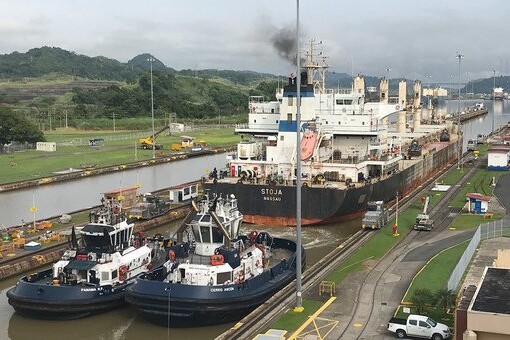Under the theme Securing Global Food Security in Times of Crisis, QU Dongyu, Food and Agriculture Organization (FAO) Director-General, told agriculture ministers from G7 wealthy nations gathered in Stuttgart, Germany, that the most significant threats stem from conflict, and the associated humanitarian impact, together with multiple overlapping crises.
In my address to #G7 agriculture ministers I stressed the need to support the continuity of farming & agrifood chains in Ukraine. I commended the group for its coordinated & timely action. We must ensure that measures taken to address the crisis do no exacerbate food insecurity. https://t.co/JCPfv7LIzG
— FAO Director-General QU Dongyu (@FAODG) May 13, 2022
“Crisis represents a challenge for food security for many countries, and especially for low‑income food import dependent countries and vulnerable population groups,” he said.
A grim overview
Based on the Global Food Crises Report released on 4 May, last year around 193 million people in 53 countries/territories were officially in the Crisis phase, or worse (IPC/CH Phase 3 or above).
Other 2021 data revealed that 570,000 people in four countries were in the category of Catastrophe phase (IPC/CH Phase 5).
Just over 39 million in 36 countries faced Emergency conditions (IPC/CH Phase 4); while just above 133 million in 41 countries were in IPC/CH Phase 3. A total of 236.2 million people in 41 countries were living in Phase 2 conditions.
“Price increases always have food security implications, particularly for the poorest,” Mr. Qu reminded.
Emergency and recovery
On top of already “high prices driven by robust demand and high input costs” resulting from COVID-19 recovery, the FAO chief noted Ukraine and Russia as important players in global commodity markets, explaining that uncertainty surrounding the war has prompted further price increases.
Wheat, maize, and oilseed prices have surged in particular.
At 160 points, the FAO Food Price Index reached its highest level ever in March, averaged 158.2 points in April and remains today at a historical high.
Mr. Qu said FAO’s proposed Food Import Financing Facility would be an important tool for easing the burden of rising food import and input costs, potentially benefitting 1.8 billion people, across 61 of the most vulnerable countries.
Price increases always have food security implications – FAO chief
A balancing act
Since the start of the conflict in February, export forecasts for Ukraine and Russia have been revised down as other market players, notably India and the European Union, have increased exports.
“This partly compensated for the exports ‘lost’ from the Black Sea region, leaving a relatively modest gap of about three million tonnes,” said the FAO chief.
He observed that wheat export prices surged in March, continued to edge upwards in April, and will likely “remain elevated in the coming months”.
He also called on governments to “refrain from imposing export restrictions, which can exacerbate food price increases and undermine trust in global markets”.
Wheat dependency
Turkey, Egypt, Eritrea, Somalia, Madagascar, Tanzania, Congo, Namibia and other countries dependent upon Ukraine and Russia for wheat have been greatly impacted.
Mr. Qu said that these States need to identify new suppliers, “which could pose a significant challenge, at least in the next six months”.
FAO
Starred countries are import dependent on food markets from Ukraine and Russia.
Fertilizer reliant
At the same time – with levels ranging from 20 to more than 70 per cent – Brazil, Argentina, Bangladesh, and other nations, are reliant on Russian fertilizer for their crops.
While Africa overall accounts for only three to four per cent of global fertilizer consumption, Cameroon, Ghana and Ivory Coast are amongst the most vulnerable countries, relying heavily on Russian supplies.
“We need to assure that key food exporting countries have access to the needed fertilizers to assure sufficient food availability for the next year,” said the top FAO official, encouraging all countries to improve fertilizer efficiency, including through soil maps and improved application.
UNICEF Somalia-Makundi
Assisting Ukraine
To support farmers’ access to crop and livestock in the immediate and medium‑term, FAO has developed a Rapid Response Plan for Ukraine, which outlines three key actions.
The first is to maintain food production through cash and inputs for cereal crops in October, vegetable and potato production in the spring, and harvest support in July and August, for the upcoming winter crop.
Secondly, the plan advocates for bolstering agrifood supply chains, value chains and markets through public-private partnerships that provide technical support to household level and smallholder producers.
And finally, it stresses the importance of ensuring accurate analyses of food security conditions and needs as they evolve.
Coordination ‘indispensable’
“Coordinated action for Ukraine within this group is indispensable to facilitate the smooth functioning of global food markets and thus to secure food supply for all,” said the Director-General
“FAO stresses the need to support the continuity of farming operations within Ukraine; while supporting agrifood value chains”.






